Two sure signs of the changing seasons are the tap-tap-tap high up in the pines of the Brown-headed Nuthatches excavating nest holes, and ee-awKEEEE of the Red-winged Blackbirds in the Wetlands.
We hear, and see, the nuthatches each year at this time as these little dynamos drill one, two, three or mores cavities into the soft wood of the pines. For all of their work they more than likely only use one of the holes to actually nest in. The other holes are often occupied by a family of chickadees, titmice, or perhaps other nuthatches.
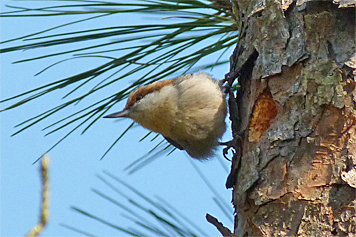
Ranger Kristin spotted the first-of-the-season Red-winged Blackbirds on February 12th as she walked down the boardwalk into the Wetlands. Red-winged Blackbirds can show up throughout the winter, it’s not until mid to late February when our first singing males show up.
The birds are a bit early this year. I heard the first singing male last year on the 19th of February. But, I may have simply not noticed their arrival last year, until they’d been on the scene for a week or so.
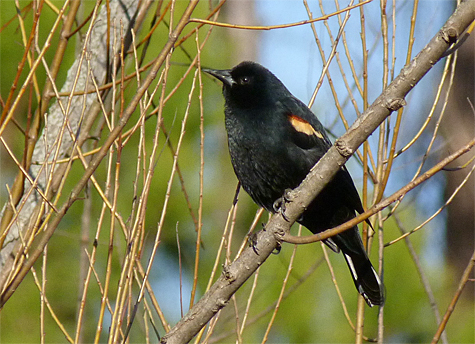
The male redwings arrive before the females, often two weeks or more before the females, to stake a claim on a territory. Red-winged Blackbirds nest in the Wetlands. I’ve only witnessed one pair actually spend the entire breeding season in our small wetland habitat, but each year in February we get a group of males which ultimately ends up in the willows on the north side of the Wetlands Overlook.
There are currently four such males in that location. They stay hidden throughout most of the day as they call out from the bases of the willows. All but one appear to be second year (SY) birds; their black feathers are edged with brown.
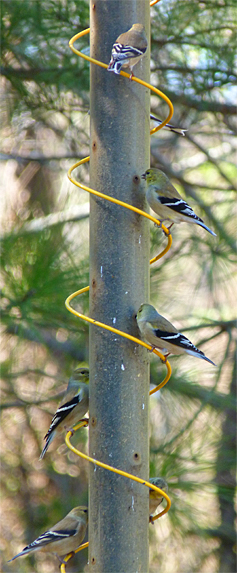
There’s not a lot of space here in our little Wetland and it’s usually just a couple of males who call to each other and chase one another around a bit in their attempt to claim the Wetlands for their own. By the time all the fuss is over there’s only one male left.
At the bird feeders in Catch the Wind, American Goldfinch numbers are increasing and Pine Warblers are visiting the suet more frequently.
Now that the cold weather appears to be behind us, I’ve been seeing Honey Bees on the Mahonia on the Dinosaur Trail. The Mahonia started to bloom back in late fall but the sustained cold of this winter held it back. It’s now doing fine. Stop by the Alamosaurus and have a look.
Turtles are out basking, maple and elm buds are swelling, it’s time to get outside!
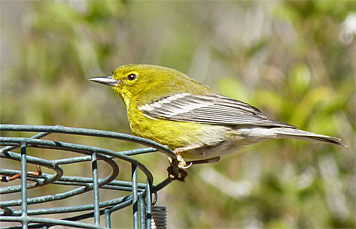
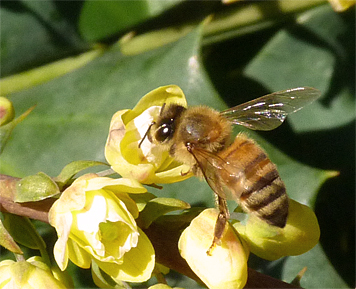
Well, what are you waiting for, go outside!